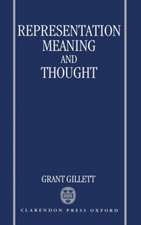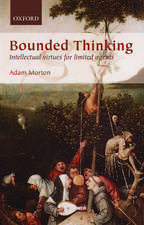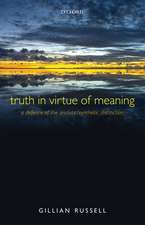Experience and Beyond: The Outline of A Darwinian Metaphysics
Autor Jan Fayeen Limba Engleză Hardback – 12 oct 2016
| Toate formatele și edițiile | Preț | Express |
|---|---|---|
| Paperback (1) | 389.11 lei 6-8 săpt. | |
| Springer International Publishing – 16 iun 2018 | 389.11 lei 6-8 săpt. | |
| Hardback (1) | 394.29 lei 6-8 săpt. | |
| Springer International Publishing – 12 oct 2016 | 394.29 lei 6-8 săpt. |
Preț: 394.29 lei
Nou
Puncte Express: 591
Preț estimativ în valută:
75.44€ • 78.78$ • 62.30£
75.44€ • 78.78$ • 62.30£
Carte tipărită la comandă
Livrare economică 15-29 aprilie
Preluare comenzi: 021 569.72.76
Specificații
ISBN-13: 9783319310763
ISBN-10: 3319310763
Pagini: 310
Ilustrații: XV, 350 p.
Dimensiuni: 148 x 210 x 24 mm
Greutate: 0.56 kg
Ediția:1st ed. 2016
Editura: Springer International Publishing
Colecția Palgrave Macmillan
Locul publicării:Cham, Switzerland
ISBN-10: 3319310763
Pagini: 310
Ilustrații: XV, 350 p.
Dimensiuni: 148 x 210 x 24 mm
Greutate: 0.56 kg
Ediția:1st ed. 2016
Editura: Springer International Publishing
Colecția Palgrave Macmillan
Locul publicării:Cham, Switzerland
Cuprins
Preface and Introduction.- 1 Evolutionary Naturalism.- The manifest image.- The scientific image.-Kant’s metaphysical dualism.- Evolutionary epistemology.- 2 Evolution and HumanCognition.- The Darwinian legacy. Setting the legacy straight.- A fallacy ofnaturalization.- Intention and innate dispositions.- 3 Sensation, Perception,and Observation.- Perception as belief acquisition.- From perception to observation.- Theory-ladenness.- Instrumentalobservation.- Observability.-4 Theory and Reality.- Forms of realism.- Conceptual frameworks and externalcommitments.- Theory realism.- The success argument.- Constructive empiricism.-Structural realism.- The failure of representationalism.- 5 Truth, Language,and Objectivity.- What istruth?.- Truth and meaning.- Non-realism concerning Truth.- A naturalized notionof truth.- Semantics and ontology.- 6 Abstraction and Reification.- Commonsense and externality.- What makes an entity abstract?.- Abstract objectsversus abstracted concepts.- Why did abstracted concepts evolve?.- 7 In Defenceof Nominalism.- Concrete, artificial, and nominal particulars.- Particulars anduniversals.- Conceptualism.- 8 Space, Time, and Space-time.- The existence of Space.-The existence of Time.- Space-time substantivalism.- Space-time relationism.- Space-timeas an abstracted concept.- Are space and time invented or discovered?.- 9Causality and Counterfactuality.- The concept.- Regularity.- Modality.- 10Human Evolution and Mathematical Physics.- Mathematics and representationalknowledge.- Mathematics – the language of quantities.- Possible worlds, many worldsand multiverses.- The Copenhagen interpretation: a non-representational view.- 11Conclusion.- Bibliography.
Notă biografică
Jan Faye teachesepistemology, metaphysics, and philosophy of science at the University ofCopenhagen, Denmark. He has published extensively within these areas in Danishas well as English. Some of his latest books include After Postmodernism (2012) and TheNature of Scientific Thinking (2014).
Textul de pe ultima copertă
This book presents a persuasive argument in favour of evolutionary naturalism and outlines what such a stance means for our capacity of observation and understanding reality. The author discusses how our capacity of knowledge is adapted to handle sensory information about the environment in the light of Charles Darwin’s theory of evolution. The implication of this is that much of our thinking in science and philosophy that goes beyond our immediate experience rests on abstractions and hypostatization. This book rejects the possibility of having any knowledge of reality as it is in itself, while not denying that our capacity of conceptual abstractions is of great benefit for our survival.
Caracteristici
Explores a key topic at the boundary between philosophy and the sciences Investigates our capacity of observation and understanding of reality in the light of evolutionary naturalism Discusses capacity of knowledge in the light of Charles Darwin’s theory of evolution

















